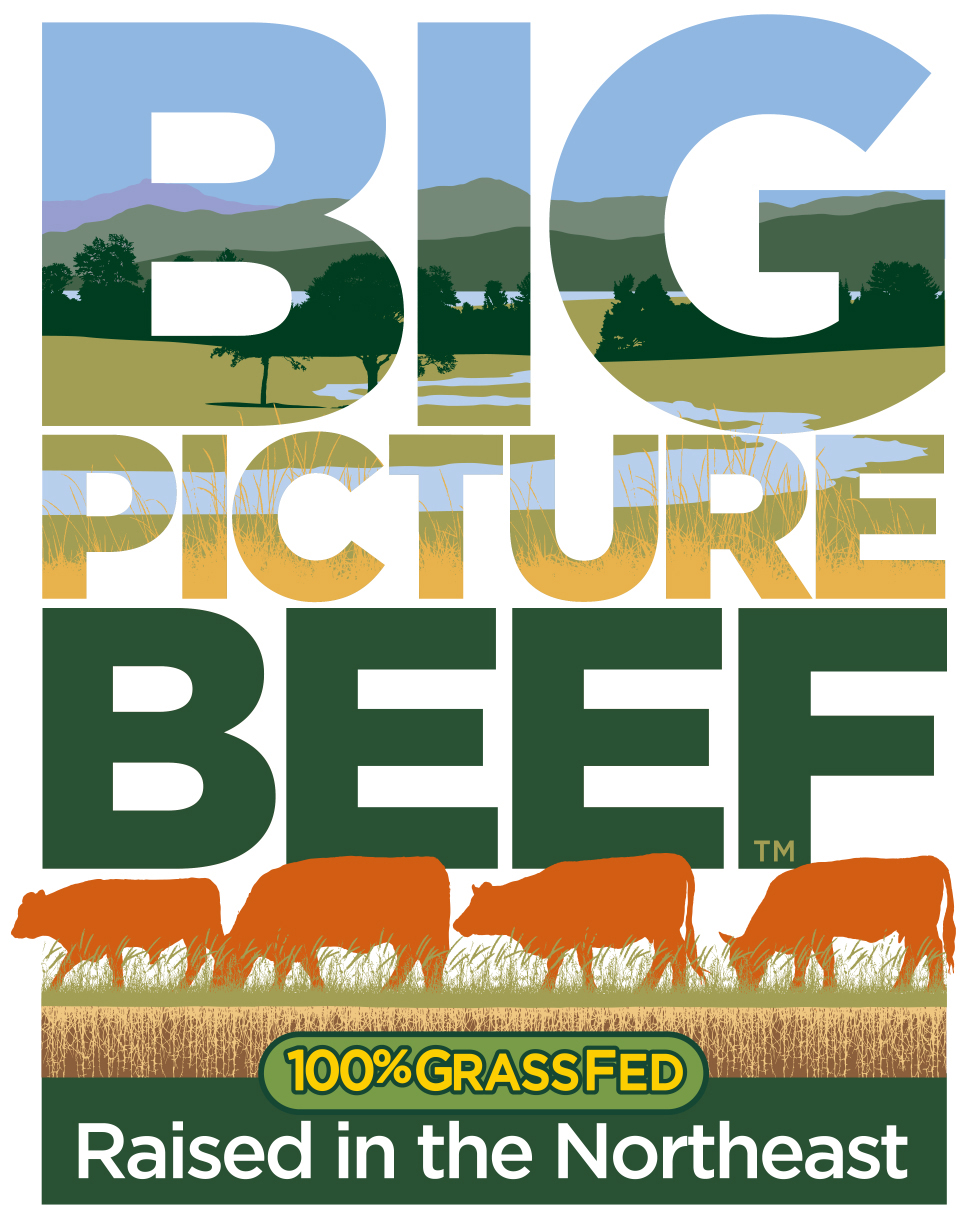HUSBANDRY
While grazing calls for careful monitoring and management, grass-fed cattle are generally healthy and thrive with some basic care. Below is an outline of practices and infrastructure that we recommend under these categories: nutrition, supplements, individual handling tasks, and infrastructure (fencing, handling system, shelter, and water).
NUTRITION
Cattle in a grass-fed program need to be managed for performance, that is, their nutritional needs depend on whether they are cows, bulls, steers or calves, and where they are in their life cycle or reproductive cycle. In larger herds, cattle are typically separated into groups, or classes, according to their nutritional needs. For example cow/calf pairs would be in one class; if the producer is also raising a large number of steers, they would be in another group.
Cows are generally bred to calve in the spring once the grass is growing, or in the fall (September), and need good nutrition during their gestation period; they also need increased levels of nutrition after calving once the calf has learned to nurse on all four quarters. Calves should remain with their mothers, nursing until 9-10 months old. Cows should be on a positive plane of nutrition when it is time to breed again.
Later, once the calf is older and before late stages of gestation, the cows do well on lower levels of nutrition to maintain good health. At this point they can be grazed in “landscape” mode; that is, they can graze (and trample) less desirable grasses, brush, and invasive plants.
Steers and heifers, on the other hand, should always be gaining weight and therefore on a rising plane of nutrition, so a brushy paddock is not appropriate for them.
Bulls should be on a rising plan of nutrition until they are fully grown, at which point they can receive a maintenance level of nutrition.
At the times in their lives when cattle require a high level of energy from their food, they should be in a paddock where they can graze the tops of plants, which is where the energy is; once all the tops have been eaten, it is best to move that group to a new paddock where the grass has not been eaten, or has regrown. Also see Pasture and Grazing.
A Body Condition Score (BCS) is a helpful management tool to distinguish the respective nutritional needs of cattle in the herd by using a numeric score that indicates the body energy reserves of each animal.
SUPPLEMENTS
Cattle should have free-choice minerals for optimal health. While cattle may walk to where the soil or plants offer the particular minerals that they need, they may not always have access to the perfect mineralization for them at a given time - therefore it is best to offer them a selection "cafeteria style" and let them chose.
Unlike feedlot cattle, if the breed is appropriate for a 100% grass-fed program and if the animals receive proper nutrition from their pasture diet, they will generally have a strong immune system and never need an antibiotic. Nor do they need growth hormones; their hormonal system will function well and they will fatten easily. (Our Big Picture Beef protocol prohibits giving antibiotics or growth hormones.)
MANAGEMENT TASKS THAT REQUIRE INDIVIDUAL HANDLING
Dehorning can be done by disbudding the calf before 6 weeks of age.
Castration should be done prior to 3 months of age with an elastrator, a Burdizzo, or surgery.
Worming should NOT be a normal routine; if the grass is tall, as it should be, the cattle do not graze close to the ground (3″ or less), which is where parasite eggs are located, so the cattle are not likely to ingest them. If a parasite load is suspected, a fecal analysis should precede and inform treatment.
Body condition scoring (see above) of each animal should be calculated; no animal should drop below #4 on the condition chart at any time in their lives.
INFRASTRUCTURE
Fence – A secure perimeter fence is highly recommended: a minimum of three hi-tensile wires, and five is better. Strong, braced corners with wooden or fiberglass posts are necessary for longevity of the fence. Posts driven or drilled every 50 feet with at least three battens between make a durable fence. At least one wire should be electrified to carry power around the entire farm for the interior portable fences. Interior divisions can be one portable electric wire.
Water – Where there are no wells or water access, another option is a spring development. An underground length of pipe or pipes collects ground water and directs it down-gradient by gravity to a covered tank.
From the storage tank, the water flows down gradient through a pipe to one or more watering troughs. Another pipe carries overflow water from the trough to another location where it runs off away from the vicinity of the trough. Utilizing gravity ensures that the water is always running and therefore will not freeze in winter.
Handling system – Some provision for catching cattle and handling them individually is essential. A heavy-duty squeeze chute and cattle panels, as pictured here, makes a safe system that is portable and can be used at various sites. On the other hand, a much less expensive, site-built system made of wood can meet all handling needs. We have done artificial insemination many times at farms with chutes that had been constructed by the farmer.
Shelter – Beef cattle of a breed suitable for raising on pasture, given good nutrition, will have no need of a barn. Indeed most will stay outside if given a choice. But do provide some sheltered spot – in a valley or by the woods, a stone wall, or a building – where the animals can get out of the wind.






